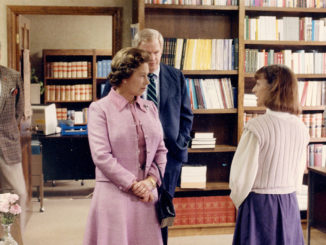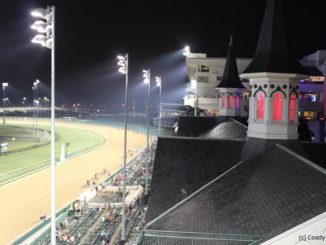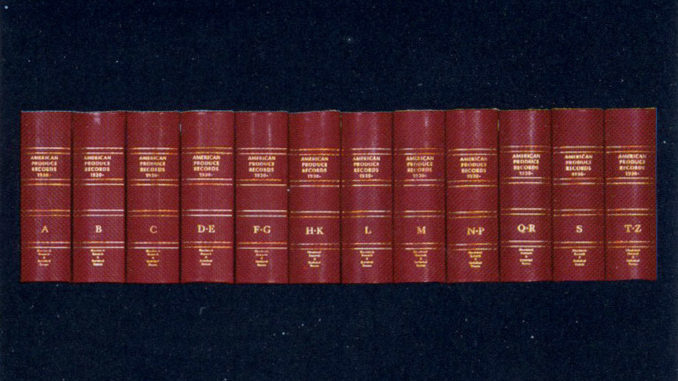
Sometimes the best ideas are born from inconvenience.
Increasingly aggravated at the amount of time it took to compile the pedigrees of the mares he was buying and selling all over the Midwest in the 1960s, the late Richard F. Broadbent III began thinking of a way to ease not only his own burden, but those of countless other horse traders and breeders throughout the country.
His solution would become the first of many innovations Broadbent revolutionized in the horse industry, and birthed a company still going strong after half a century.
***
From a family with roots in southern Indiana, Broadbent was born in Shelbyville, Kentucky, in 1937. After marrying Martha Haggin in the late 1950s, Broadbent settled in Indianapolis, where he and a brother ran a Phillips 66 gas station.
However, it was almost impossible for the horse bug not to eventually bite Broadbent, for Martha was the daughter of Keeneland president Louis Lee Haggin II and a granddaughter of Hal Price Headley, Keeneland’s co-founder and a prominent horseman in his own right.
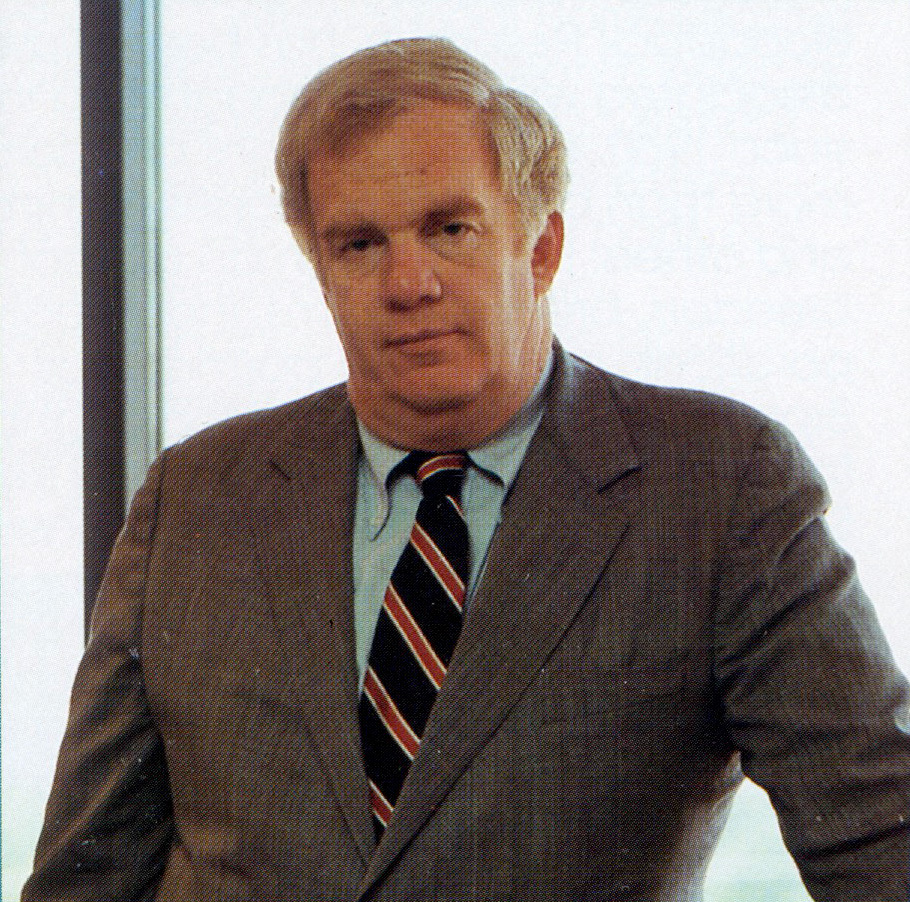
“My dad started dabbling around, buying fillies off the racetrack. He actually met Norm Casse in Indianapolis,” said Broadbent’s son, Happy, referring to the father of Hall of Fame trainer Mark Casse. “They would look at the (Daily Racing Form), see potential fillies they could buy and could flip quickly for a thousand or two thousand. Casse and my dad would get into a pickup truck with a trailer behind them and they would go to these different racetracks and buy these fillies and bring them back to Indiana.
“At some point, my dad realized that this was something he wanted to continue to do.”
Buying a farm on the outskirts of Louisville, next to Hermitage Farm in Goshen, Broadbent began breeding mares while continuing to buy and sell off the racetrack. Although he had built his own library in his basement at the farm in order to research the pedigrees of the horses that were passing through his hands, spending two or three days compiling all of the necessary information on their bloodlines began to wear on him.
What was needed, Broadbent thought, was a single go-to source. And it needed to be compiled using the latest technology available at the time.
Enter the American Produce Records
…Broadbent spent considerable graveyard shift time at the KFC headquarters, using the company’s computer system to input the data necessary…
“He came up with the idea of producing these books called the American Produce Records (APR), which were introduced in 1971,” Happy Broadbent said. “These 12-volume set of books basically enabled anyone to determine a pedigree within a matter of minutes, by flipping through and determining the offspring of particular broodmares.”

With the help of a friend, Kentucky Fried Chicken mogul and future Kentucky governor John Y. Brown Jr., Broadbent spent considerable graveyard shift time at the KFC headquarters in Louisville, using the company’s computer system to input the data necessary to produce the books.
“My dad was never big on flying, so he basically bought a mobile home and went from sale to sale all over the country and sold these books,” Happy Broadbent said. “They were about $400 (about $2,700 in current dollars), and you could get a leather-bound or buckram-bound set. They revolutionized the way you could research a pedigree.”
With the million or so dollars of proceeds from the sale of the first edition of the APR, Broadbent set up an office in Lexington and invested in his own computer and mainframe system to compile and produce the books on an annual basis. Bloodstock Research Information Services (BRIS) was born.
The arrival of royalty in a new age
One year I think they had 14 graded stakes winners off the mares they had produced….
Although the popularity of the APR was undiminished, by the mid-1970s, the computer age was beginning to make encyclopedia-like sets of books increasingly impractical for bringing up-to-date information to the masses. Broadbent also began to see the need to enhance the product line BRIS could provide with the pedigree information at its disposal.
“He started spinning off into other things they could do statistically with the books and information he was compiling,” Happy Broadbent said. “He was able to work a deal out with The Jockey Club to get registration information. He also went to Daily Racing Form to get all the racing information charts and input that into his mainframe system. Any sales of products derived from that information, they were getting a commission, or royalty, off of that.
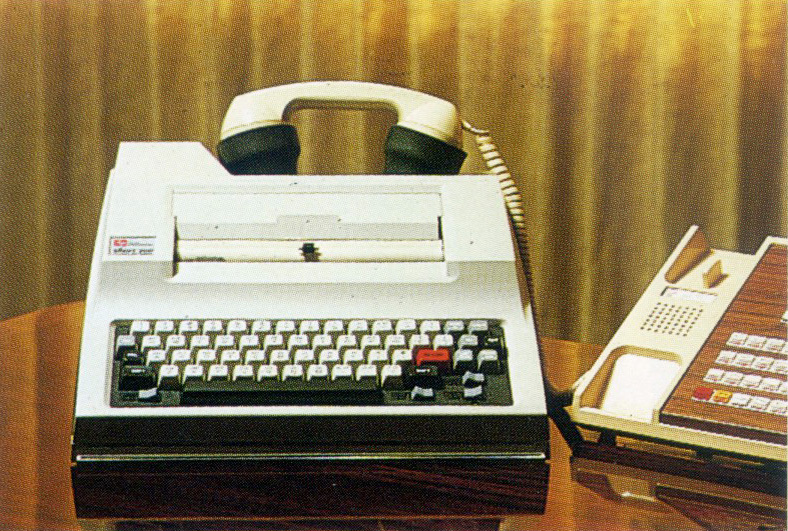
“It was about 1977 that customers were able to log into the mainframe system to pull down pedigrees and racing information on horses that we had programmers develop and create. At the time, to access the mainframe system, all you had to have was a phone receiver and [a standard office computer terminal].”
Many prominent breeders and farm operations throughout the country soon became interested in the wide variety of statistical data BRIS produced.
“One of the things we have in the world of breeding is nicks, or nicking reports. If there was somebody who authored all that, it was all derived off of what my dad came up with,” Happy Broadbent said. “Using the computer system, my dad would determine what stallions were best to mate to particular mares. A lot of success these farms had in the early 1980s was related to some of those nicking patterns.
“The one he had the most success with was Newstead Farm in Virginia. They only had a broodmare band of about 20 mares. Some of those were Miss Oceana, White Star Line, and Larida. One year I think they had 14 graded stakes winners off the mares they had produced. Miss Oceana brought $7 million (at a 1985 dispersal).”
The consulting side of the business proved huge for finding stallion prospects as well. Using BRIS data, Broadbent advised Spendthrift Farm owner Leslie Combs to obtain the Florida-based stallion Exclusive Native.
“One of the things we determined using statistical data was that Exclusive Native was really moving his mares up. He was having tremendous success with the cheaper mares he was being bred to in Florida,” Happy Broadbent said.
Exclusive Native sired Affirmed and Genuine Risk, the Hall of Famers who won the Kentucky Derby (G1) in 1978 and 1980, respectively.
The French stallion Caro was another Broadbent advised on importing to the U.S. After his arrival at Spendthrift, Caro sired Kentucky Derby heroine Winning Colors, grass champion Cozzene, and Canadian Triple Crown winner With Approval.
Cutting Edge
BRIS was so cutting edge in the early 1980s that it began attracting attention from national media and important figures. The company was featured in the New York Times and Science Digest, and the CBS newsmagazine “Universe,” hosted by Walter Cronkite, also profiled Broadbent’s creation.
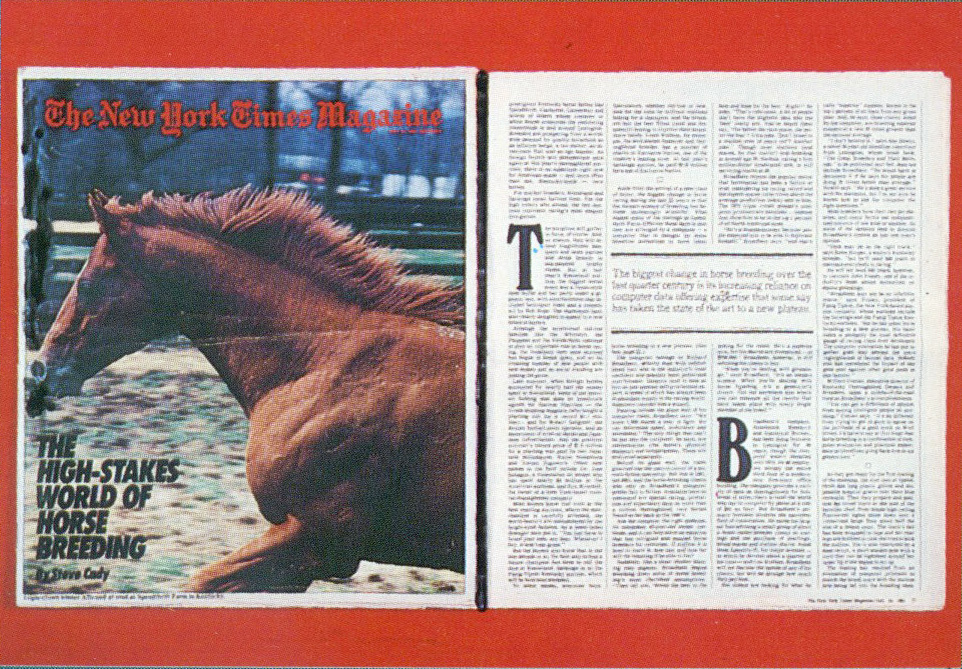
But the biggest event in the company’s history occurred in October 1984, when Broadbent hosted a visit from Queen Elizabeth II to the BRIS offices. She had been intrigued to see firsthand what BRIS was doing after hearing about it from her racing manager, Lord Porchester, whose son, Harry Herbert, was a BRIS employee at the time.
“The one thing I’ll say about my dad is he was the hardest working,” Happy Broadbent said. “He was a workaholic. He’d work 18-hour days. His mind was always constantly thinking about what the next thing was and what the next thing that was going to be good for our industry. It was neat to see growing up.”
By the mid-1980s, forward thinking on the part of Broadbent would become essential as swift changes to the industry’s health, and the threat of increased competition to the company’s long-standing business, emerged.
Return to Brisnet for future parts of the ongoing 50 year history of industry innovation.

